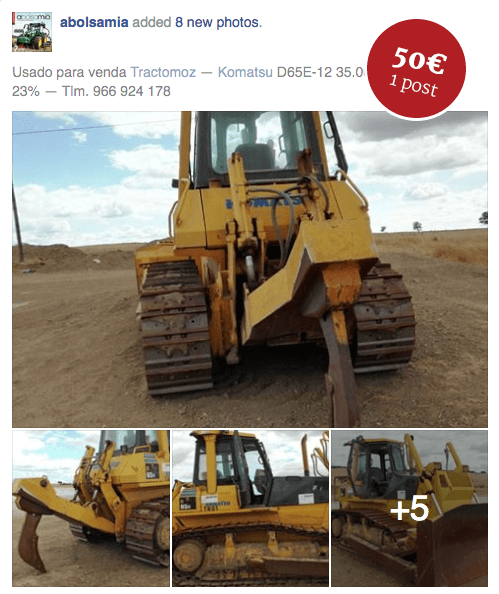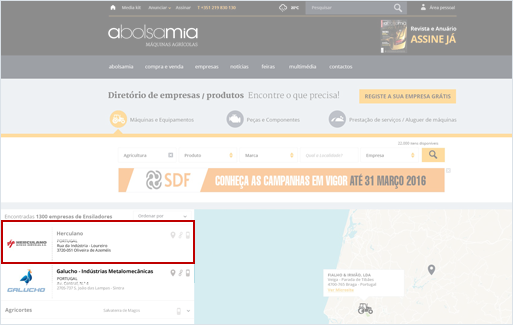Proteção de Dados Pessoais
A NUGON, LDA, proprietária da revista abolsamia e site abolsamia.pt, é responsável pela recolha e tratamento de dados pessoais que foram obtidos de forma digital, nomeadamente, pela utilização deste website, comprometendo-se a respeitar a privacidade dos utilizadores, assegurando a confidencialidade e segurança dos dados recebidos, em estreito cumprimento da legislação em vigor.
A presente Política de Proteção de Dados Pessoais descreve as nossas práticas de conservação, tratamento e acesso das informações pessoais. Ao aceitar, está a autorizar a NUGON, LDA ao tratamento dos seus dados, dos quais confirma ser titular, bem como dos dados relativos à sua relação comercial e contratual e respetiva gestão nos termos do presente texto.
Declara ainda estar consciente e plenamente informado(a) de que o tratamento dos seus dados pessoais, previamente transmitidos por si, inclui todas as operações efetuadas por meios automatizados ou não.
Adicionalmente, declara o conhecimento dos seus direitos a se opor, corrigir e/ou requerer o “Direito ao Esquecimento” relativamente ao tratamento dos seus Dados Pessoais mediante o envio de um pedido para o endereço eletrónico – abolsamia@abolsamia.pt, bem como a ter direito a apresentar queixa junto das autoridades competentes.
Leia atentamente os seguintes termos:
1. PREÂMBULO
A presente Política de Proteção de Dados Pessoais, doravante designada por “Política de Proteção” pretende informá-lo acerca dos seguintes pontos:
1.1. Compromissos adotados pela NUGON, LDA, acerca da Proteção de Dados Pessoais, nos termos e de acordo com o Regulamento Geral de Proteção de Dados, doravante designados por “RGPD” (EU) 2016/679, sobre a proteção das pessoas singulares no que concerne ao tratamento de Dados Pessoais e à livre circulação de tais dados.
1.2. Forma pela qual a NUGON, LDA trata os seus Dados Pessoais obtidos de forma digital através do website e/ou aplicações digitais.
2. DEFINIÇÕES
No enquadramento seguinte, a NUGON, LDA providencia o enquadramento sobre as seguintes definições:
Definição de “Dados Pessoais”: refere-se a todas as informações relacionadas com o Titular dos dados e que o permitam identificar.
Definição de “Titular dos dados”: pessoa singular identificada ou identificável a quem os Dados Pessoais se encontram associados. O utilizador do website considera-se como Titular dos Dados perante a NUGON, LDA. A pessoa singular pode ser identificável ou identificada, direta ou indiretamente, nomeadamente, através do nome, número de identificação civil ou fiscal, dados de localização, identificadores online (tais como endereços de IP e logs).
Definição de “Controlador”: entidade interna que define os objetivos e meios do Tratamento de Dados Pessoais.
Definição de “Subcontratante”: entidade externa à NUGON, LDA que procede ao Tratamento dos Dados Pessoais em nome daquela. O “Subcontratante” celebrou um termo de confidencialidade com a NUGON, LDA, no qual se compromete a manter sigilo sobre as informações às quais efetua tratamento.
Definição de “Tratamento dos dados”: qualquer operação efetuada no âmbito dos Dados Pessoais através de meios automáticos ou não: recolha, gravação, organização, estruturação, armazenamento, adaptação ou alteração, recuperação, consulta, utilização, divulgação por transmissão, disseminação ou, alternativamente, disponibilização, harmonização ou associação, restrição, eliminação ou destruição. Também é considerado Tratamento de Dados Pessoais qualquer outra operação prevista nos termos do RGPD.
3. COMPROMISSOS ASSUMIDOS
A NUGON, LDA garante a completa proteção dos Dados Pessoais de acordo com as normas previstas no RGPD no que diz respeito à totalidade dos procedimentos e obrigatoriedades naquele previstos, especialmente no que diz respeito ao Tratamento dos Dados Pessoais dos utilizadores dos websites, aplicações digitais (p. ex.: visitantes, clientes, possíveis clientes, candidatos a empregos, etc).
A NUGON, LDA implementou ferramentas e procedimentos digitais com o objetivo de garantir a eficaz proteção dos Dados Pessoais.
No acompanhamento das conformidades dos procedimentos do RGPD, a NUGON, LDA adotou e implementou diversas políticas internas e procedimentos com vista à sensibilização dos seus colaboradores, fornecedores e parceiros, sobre a proteção dos Dados Pessoais.
3.1. PRINCÍPIOS DE PROTEÇÃO DE DADOS PESSOAIS
Tratamento de Dados Pessoais
A NUGON, LDA compromete-se a tratar os seus Dados Pessoais em conformidade com os seguintes princípios:
- Processamento legalmente, imparcialmente e transparente, garantindo assim os princípios da legalidade, imparcialidade e transparência;
- Recolha e processamento para finalidades específicas, explícitas e legítimas. Cumprimento do princípio da limitação da finalidade, dado que não serão processados de forma divergente e incompatível com os efeitos para os quais foram recolhidos;
- Recolha e tratamento adequados, relevantes e limitados ao estritamente necessário, tendo em conta os objetivos para os quais são processados, respeitando assim o princípio da minimização dos dados;
- Os Dados Pessoais cedidos devem ser verdadeiros, procedendo à respetiva retificação ou atualização sempre que necessário ou assim o entenda.
Segurança do Tratamento
A NUGON, LDA definiu medidas técnicas e procedimentais com vista à eficaz implementação dos princípios da proteção dos Dados Pessoais, no sentido de cumprir com o RGPD, protegendo assim os direitos, liberdades e garantias dos Titulares dos Dados Pessoais, a partir do início da sua recolha e consequente Tratamento.
Foi determinada a imposição do mesmo nível de proteção de Dados Pessoais a todos os Subcontratantes (prestadores de serviços, fornecedores, parceiros, etc).
4. PROCESSAMENTO DE DADOS PESSOAIS
4.1 COMO SE PROCEDE À RECOLHA DE DADOS PESSOAIS
A NUGON, LDA procede à recolha dos seus Dados Pessoais no estabelecimento comercial que explora e por intermédio do seu website e/ou aplicações digitais, em que o utilizador disponibiliza e consente explicitamente, especificando:
- Estabelecimento comercial que explora;
- Registo/conta no nosso website e/ou aplicações digitais;
- Quando navega no website, aplicações digitais da NUGON, LDA (ou seja, informação técnica, tal como endereços de IP ou logs, recolhidos através de cookies ou tecnologias semelhantes quando autorizadas);
- Quando adquire artigos, produtos ou serviços online;
- Quando subscreve a Newsletter disponibilizada pela NUGON, LDA;
- Quando participa num concurso, programa de marketing, teste ou sondagem;
- Quando se candidata a um emprego no nosso estabelecimento comercial ou através do website;
- Quando introduz comentários ou imagens nas páginas das redes sociais detidas pela NUGON, LDA;
- Quando, de qualquer outra forma, nos envia informação de caráter pessoal e consente no seu armazenamento e tratamento;
4.2. PORQUE É NECESSÁRIO A RECOLHA DE DADOS PESSOAIS
Gestão da Relação com os Clientes
A NUGON, LDA recolhe os Dados Pessoais respeitantes a relações de negócios com clientes e possíveis clientes e, particularmente para:
- Possibilitar a navegação pelo website, aplicações digitais da NUGON, LDA, utilizando a sua conta pessoal online e, serviços que lhe são inerentes;
- Permitir a realização de encomendas online, na aquisição de artigos, produtos e serviços, no website e/ou aplicações digitais;
- Fornecer serviços pós-venda relacionados com as suas encomendas ou com artigos, produtos e serviços que adquiriu;
- Obter a sua opinião sobre artigos, produtos e serviços, em particular através de sondagens e testes;
- Permitir a participação em concursos, questionários ou outros programas de marketing;
- Estabelecer análises estatísticas, estudos financeiros, comerciais e para efeitos de gestão de tráfego online (p. ex.: para obtenção dos níveis de utilização do website, aplicações digitais da NUGON, LDA, assim como da relevância dos serviços disponibilizados como forma de melhorar a capacidade de utilização daqueles);
- Envio de informação, comunicação promocional e/ou publicidade da NUGON, LDA, em particular sobre produtos, serviços, novidades, campanhas e eventos que podem interessar ao cliente (desde que sujeito à sua autorização prévia, quando é necessária e respeitando o seu direito de recusa, de acordo com os requisitos legais aplicáveis ao marketing direto para fins comerciais).
Estas notificações podem ser enviadas por correio eletrónico ou através de serviço telefónico (chamada telefónica, SMS e MMS).
Combate à fraude
Os seus Dados Pessoais serão tratados de forma a evitar que sobre os mesmos surjam situações de fraude por parte de terceiros.
Os Dados Pessoais relacionados com a sua encomenda serão tratados de forma a garantir um alto nível de segurança na realização da transação como forma de evitar o roubo de identidade e a fraude na realização dos pagamentos. Com a intenção de combater a fraude, os pagamentos realizados online podem ser alvo de auditorias por parte da NUGON, LDA, através de métodos de processamento automático da informação relacionada com a encomenda. A NUGON, LDA pode transferir os seus Dados Pessoais a terceiros, tais como prestadores de serviços ou, quando legalmente exigível, a autoridades públicas e/ou judiciais. Nestas condições, a NUGON, LDA pode recusar todas e quaisquer transações comerciais até à regularização da situação. Na verificação de situações análogas às supra descritas, o cliente será informado individualmente e terá a possibilidade de se pronunciar e comprovar a sua identidade.
A informação considerada obrigatória é assinalada com um asterisco nos formulários online disponíveis pela NUGON, LDA. Sem o devido preenchimento destes campos, o pedido de informação e/ou encomenda dos utilizadores, não poderá ser processado. A prestação da restante informação é facultativa.
Gestão de Recrutamento e Recursos Humanos
A NUGON, LDA recolhe os seus Dados Pessoais através de um formulário disponível no estabelecimento comercial ou na página respetiva do website, com vista à análise e resposta de candidatura a determinado emprego. Nos casos em que não se verifique qualquer ação por parte da NUGON, LDA no que reporta à candidatura de emprego, os Dados Pessoais serão conservados de acordo com as disposições previstas no ponto referente a “Tempo de Armazenamento de Dados Pessoais”.
4.3 BASE LEGAL DO PROCESSAMENTO
As operações no Tratamento de Dados Pessoais dos clientes da NUGON, LDA, ocorrem:
- No seu interesse legítimo na concretização das vendas, proteção das suas atividades, produtos e serviços, assim como, em identificar melhor as preferências dos seus clientes como forma de personalizar ofertas e destacar artigos, produtos e/ou serviços que melhor correspondem às suas necessidades;
- Na necessidade de executar os contratos celebrados com os seus clientes para a venda de artigos, produtos e/ou serviços;
- Quando o Tratamento é exigido pela legislação em vigor;
- Quando o consentimento explícito é adquirido.
A NUGON, LDA tem interesse legítimo em realizar operações de recrutamento para gerir as suas atividades da melhor forma possível, efetuando a recolha de todos os dados necessários sobre os candidatos interessados.
Em todos os casos, salienta-se que a NUGON, LDA apenas trata Dados Pessoais se:
- O Titular tiver dado autorização expressa para o Tratamento dos seus Dados Pessoais para uma ou mais finalidades específicas;
- O Tratamento for necessário para a boa execução de um contrato no qual é parte;
- O Tratamento for necessário para a concretização dos interesses legítimos da NUGON, LDA, salvo quando a esses interesses não se sobrepõem os interesses ou direitos e liberdades fundamentais do Titular dos Dados, especialmente se o Titular dos Dados for uma criança.
4.4 TEMPO DE ARMAZENAMENTO DE DADOS PESSOAIS
A NUGON, LDA mantém os seus Dados Pessoais de acordo com os períodos de conservação impostos pela legislação e regulamentos em vigor, nomeadamente tendo em conta as suas atividades, armazenando-os durante os seguintes períodos:
- Quando nos contacta para pedir uma informação, guardamos os seus dados pessoais durante o tempo necessário para processar e efetivar o seu pedido;
- Conservamos os seus dados pessoais usados para marketing direto até que cancele a autorização ou nos peça para os eliminar, nos termos da legislação em vigor. Nesse caso, a NUGON, LDA só preservará a informação necessária para garantir o seu direito de oposição de acordo com os regulamentos e normas legais.
Os cookies usados pela NUGON, LDA são armazenados até que o utilizador os remova do seu browser.
4.5 RECETORES DOS DADOS PESSOAIS
Os colaboradores da NUGON, LDA responsáveis pela gestão de apoio ao cliente, vendas, recrutamento e recursos humanos, apenas podem aceder aos seus Dados Pessoais por estrita necessidade.
A NUGON, LDA não partilha os seus Dados Pessoais com terceiros, à exceção de prestadores de serviços, segundo nos termos do previsto no ponto referente a “Medidas de Segurança e Subcontratantes”, especialmente para fins de combate à fraude, gestão de pagamentos, alojamento, administração de Tecnologias de Informação e prestação de apoio ao cliente.
A NUGON, LDA poderá transferir Dados Pessoais para terceiros em consonância com pedidos de autoridades judiciais públicas com poderes legais para o efeito, de acordo com as normas legais em vigor.
A NUGON, LDA garante a confidencialidade e a segurança dos Dados Pessoais durante a transferência para os recetores acima mencionados.
5. SOBRE COOKIES
O que são cookies?
Os websites, aplicações e plataformas digitais podem utilizar cookies ou tecnologias semelhantes, para melhorar a sua experiência de navegação. Os cookies constituem informação armazenada no seu equipamento pessoal sobre os sites que visita. Por vezes, são armazenados num ficheiro de texto simples, acedidos por um servidor que lê e regista a informação.
Os sites apenas podem ler e escrever cookies detidos pelos mesmos.
A nossa utilização de cookies
Quando navega no nosso website, usamos cookies para «reconhecer» o seu browser, apenas durante a sua visita («cookie de sessão») ou durante todas as suas visitas («cookie permanente»). No nosso site, os cookies são utilizados com as seguintes finalidades:
- Por motivos técnicos (identificar sessões, manter configurações ou carrinhos de compras, etc.) para, por exemplo, adaptar a apresentação do website, aplicação ou plataforma digital ao seu dispositivo;
- Para análises estatísticas e efeitos de gestão de tráfego online, por exemplo, para melhorar a capacidade de utilização de um website, aplicação e plataforma digital e a relevância dos nossos serviços;
- Para redefinir o público-alvo e fornecer-lhe conteúdo de marketing noutros websites;
- Para efeitos de geo-localização ao utilizar funções específicas, como recomendações de moradas de lojas e produtos disponíveis no ponto de venda mais perto.
5.1. OUTROS COOKIES
Cookies de terceiros
Se autorizado nas suas definições de cookies (consultar a secção de definições de cookies abaixo), terceiros (agências de publicidade, empresas de análises de internet, etc.) irão configurar/ler cookies quando navega no nosso website e aplicações digitais.
A utilização destes cookies é gerida pelas políticas de privacidade.
Estes cookies são usados por estas empresas, durante a vida útil dos cookies, para determinar e distribuir conteúdo publicitário relevante, refletindo os seus principais interesses com base no conhecimento dos seus hábitos de navegação no nosso website, aplicações e plataformas digitais.
Abaixo listamos as cookies utilizadas no nosso website:
| Nome |
Tipo |
Função |
Duração |
Acessível por terceiros? |
| _ga |
Analítico |
Diferenciar utilizadores |
12 meses |
Sim (Google) |
| _gat_gtag_UA_1963164_1 |
Analítico |
Controlo da taxa de solicitação |
1 minuto |
Sim (Google) |
| _gid |
Analítico |
Diferenciar utilizadores |
24 horas |
Sim (Google) |
| _hjAbsoluteSessionInProgress |
Analítico |
Detectar a primeira sessão de exibição de página de um utilizador. Este é um sinalizador verdadeiro/falso definido pelo cookie. |
30 minutos |
Sim (HotJar) |
| _hjFirstSeen |
Analítico |
Identificar a primeira sessão de um novo utilizador, armazenar um valor verdadeiro/falso e indicar se esta foi a primeira vez que o Hotjar viu este utilizador. É usado por filtros de gravação para identificar novas sessões do utilizador. |
Sessão |
Sim (HotJar) |
| _hjSessionUser_1202380 |
Analítico |
Este é definido quando um utilizador acede pela primeira vez a uma página com o script Hotjar. Desta forma, grava o ID do utilizador Hotjar, exclusivo para esse site no navegador, garantindo que o comportamento nas visitas seguintes ao site seja atribuído ao mesmo ID do utilizador em questão. |
365 dias |
Sim (HotJar) |
| _hjSession_1202380 |
Analítico |
Contém os dados da sessão atual, assegurando que as solicitações seguintes na janela da sessão são atribuídas à mesma sessão do Hotjar. |
30 minutos |
Sim (HotJar) |
| _hjTLDTest |
Analítico |
Ao executar o script Hotjar, procura determinar o caminho do cookie mais genérico a usar, em vez do nome do host da página. Isto é feito para que os cookies possam ser compartilhados entre subdomínios (quando aplicável). Para o determinar, armazenamos o cookie _hjTLDTest para diferentes alternativas de substring de URL até que ele falhe. Após esta verificação, o cookie é removido. |
Sessão |
Sim (HotJar) |
| _hjIncludedInPageviewSample |
Analítico |
Permitir que o Hotjar saiba se aquele utilizador está incluído na lista de dados definida pelo limite de page views do site. |
30 minutos |
Sim (HotJar) |
| ASPSESSIONIDCSDAAADR |
|
Cookie de sessão |
Sessão |
|
| _consent |
|
RGPD - consentimento geral. |
1 dia |
|
| _consent_analytic |
|
RGPD - consentimento analítico. |
1 dia |
|
| _consent_essential |
|
RGPD - consentimento essencial. |
1 dia |
|
| _consent_functional |
|
RGPD - consentimento funcional. |
1 dia |
|
Redes sociais
Para lhe permitir partilhar conteúdos ou comentários sobre os nossos produtos e/ou serviços, o nosso website, podem incluir componentes de redes sociais (botões, plug-ins, etc.).
Estes componentes são usados pelas redes sociais para registar os seus hábitos de navegação e só funcionarão se o seu navegador estiver ligado à rede social em questão (mas não tem de ter usado o botão «partilhar», por exemplo).
As redes sociais que usa determinam os termos que regem a sua utilização da informação que estas obtêm não tendo a NUGON, LDA qualquer controlo sobre a utilização desta informação. Recomendamos que consulte as respetivas políticas de privacidade, que especificarão a forma como usam estes dados e as ações que pode efetuar para aumentar a confidencialidade da conta.
Dispositivos partilhados
Como os cookies estão ligados ao dispositivo e ao navegador usado, não é possível determinar a identidade do utilizador do dispositivo. Deste modo, alguns serviços e publicidade oferecidos neste dispositivo podem não corresponder à sua utilização (as definições/os hábitos de navegação de outros utilizadores do dispositivo podem influenciar o conteúdo oferecido).
Pode escolher o nível de confidencialidade do seu dispositivo ao decidir quem o pode utilizar (pessoas autorizadas a aceder ao dispositivo) e alterar as suas definições (em especial, as definições de cookies).
Definições de cookies
Pode alterar as suas definições de cookies em qualquer momento, encontrando-se disponíveis várias opções, como descrito abaixo.
As definições que escolher podem afetar a sua experiência de navegação e o funcionamento de alguns serviços que exijam a utilização de cookies. Neste sentido, rejeitamos qualquer responsabilidade pelas consequências advenientes do funcionamento limitado dos nossos serviços, provocados pela desativação de cookies no seu dispositivo (incapacidade de definir ou ler um cookie).
Computadores (PC)
Pode gerir os cookies através de várias opções nas definições do seu navegador, para permitir ou bloquear cookies, em geral ou para ações específicas, em qualquer altura. Os cookies são geridos de forma diferente em cada navegador.
Visite o link do seu navegador para saber mais:
Google Chrome https://support.google.com/chrome/answer/95647?hl=en
Internet Explorer http://windows.microsoft.com/en-us/internet-explorer/delete-manage-cookies#ie=ie-11
Mozilla Firefox https://support.mozilla.org/en-US/kb/delete-cookies-remove-info-websites-stored
Safari https://support.apple.com/en-gb/HT201265
Edge https://privacy.microsoft.com/pt-pt/windows-10-microsoft-edge-and-privacy
Para todos os outros dispositivos (smartphones, tablets, dispositivos inteligentes), consulte o menu Ajuda no seu navegador.
6. MEDIDAS DE SEGURANÇA E SUBCONTRATANTES
A NUGON, LDA implementou todas as medidas técnicas e organizacionais adequadas a garantir um nível de segurança dos Dados Pessoais adequado ao risco e, em particular, a proteger os Dados Pessoais contra destruição, perda, alteração, divulgação não autorizada ou acesso acidental ou ilegal.
O mesmo nível de proteção é imposto pela NUGON, LDA aos seus Subcontratantes.
Qualquer colaborador da NUGON, LDA que, durante o seu trabalho, possa ter acesso aos seus Dados Pessoais mantê-los-á estritamente confidenciais.
7. EXERCÍCIO DOS SEUS DIREITOS
Pode, em qualquer altura, em conformidade com as regras aplicáveis em relação à proteção de Dados Pessoais, exercer os seus direitos de acesso, retificação, eliminação e transferência dos seus Dados Pessoais.
Também tem o direito de se opor ao Tratamento dos seus Dados Pessoais para efeitos de marketing direito e, assim, pedir para deixar de receber comunicações promocionais da NUGON, LDA, em qualquer altura.
Quando o Tratamento se baseia na sua autorização expressa, tem o direito de revogar a sua autorização em qualquer altura.
Para exercer os seus direitos, sobretudo no que respeita ao “Direito ao Esquecimento” ou eliminação dos seus Dados Pessoais, pode contactar-nos através do seguinte endereço de e-mail: abolsamia@abolsamia.pt
Para nos permitir dar resposta ao seu pedido, deve comunicar-nos os seguintes dados de identificação necessários: Nome, E-mail ou Morada e qualquer outra informação necessária para confirmar a sua identidade.
Também tem o direito de apresentar queixa à Autoridade de Supervisão em caso de violação das regras aplicáveis à proteção de Dados Pessoais, em particular do RGPD.
8. ALTERAÇÕES À NOSSA POLÍTICA DE PROTEÇÃO
A Política de Proteção de Dados Pessoais pode ser alterada pela NUGON, LDA em qualquer altura.
A NUGON, LDA poderá ajustar a Política de Proteção (ex.: caso seja pretendido a utilização dos seus Dados Pessoais de outra forma que não a estipulada na Política de Proteção em vigor na altura da recolha de dados), sendo a mesma publicada sem aviso prévio, através da atualização na página da Política de Proteção de Dados Pessoais. A comunicação aos clientes apenas será efetuada se as alterações assim o justificarem.
Para quaisquer questões ou comentários relacionados com a nossa Política de Proteção ou com a forma como a NUGON, LDA recolhe e usa os seus Dados Pessoais e para exercer os seus direitos relacionados com os seus Dados Pessoais recolhidos, contacte-nos para o seguinte endereço de email: abolsamia@abolsamia.pt














